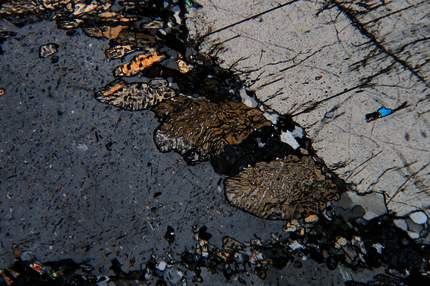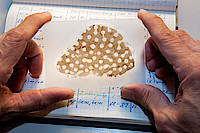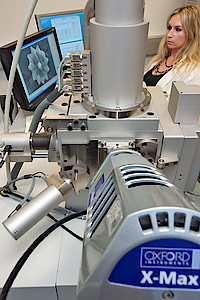To research
Looking through a microscope is a typical activity of many geoscientists as minuscule details reveal the history of rocks. Microfossils or even smaller nannofossils represent the remains of animal or plant organisms. Micropalaeontologists use them for dating the relative age and former sedimentary environment of rocks. Information on water depth, salinity or climate at the time of deposition can thus be gained.
Crystalline geologists study thin sections of rocks under special microscopes. Polarised light makes minerals appear in certain colours. The determined mineral association allows to infer pressure and temperature conditions in the Earth’s interior at the time of rock formation.
Through meticulous research, time slices of the geological past can be modelled and put together to reconstruct Earth’s history. Further topics of basic geological research include the position of former continents on the globe, the face of Austria before the formation of the Alps and glaciations during ice ages.
Research geologists naturally include neighbouring countries as geological units continue across borders. Discussion with colleagues, joint field trips and research lead to scientific publications which are presented at international conferences.
In the field of development of instruments and methods, GBA contributes significantly. Examples include optimising geophysical measurement systems and developing expert systems for the evaluation of mineral resources.




